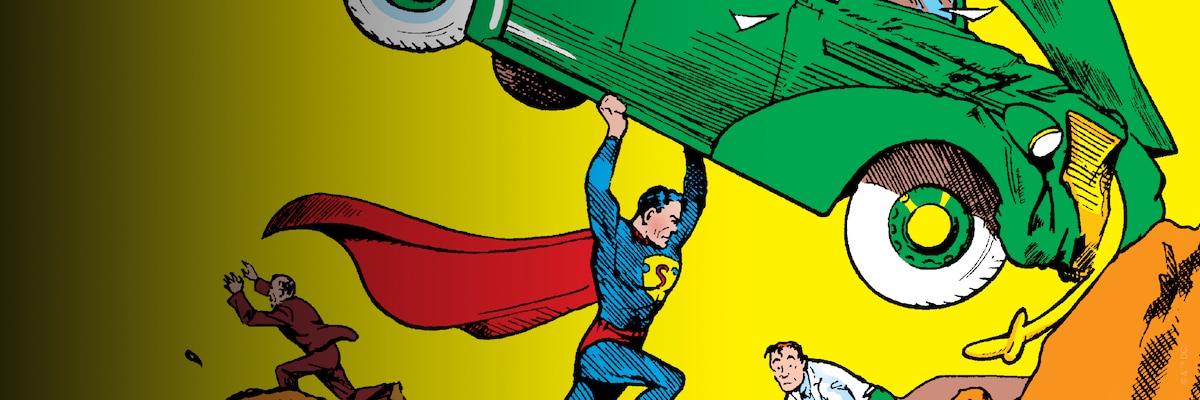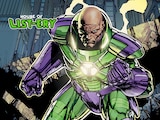You’ve seen the new Superman movie…now what?
Well, there are plenty of other Superman movies to discover, both live action and animated. But if you’re here, chances are you’re looking at getting into Superman comics. No matter how you got here and how long you’ve been a fan, welcome! We’re here to help you get started by explaining all of the ins and outs of the Man of Steel’s comic book history so that you can decide on the perfect place to dive in. Let’s get started!
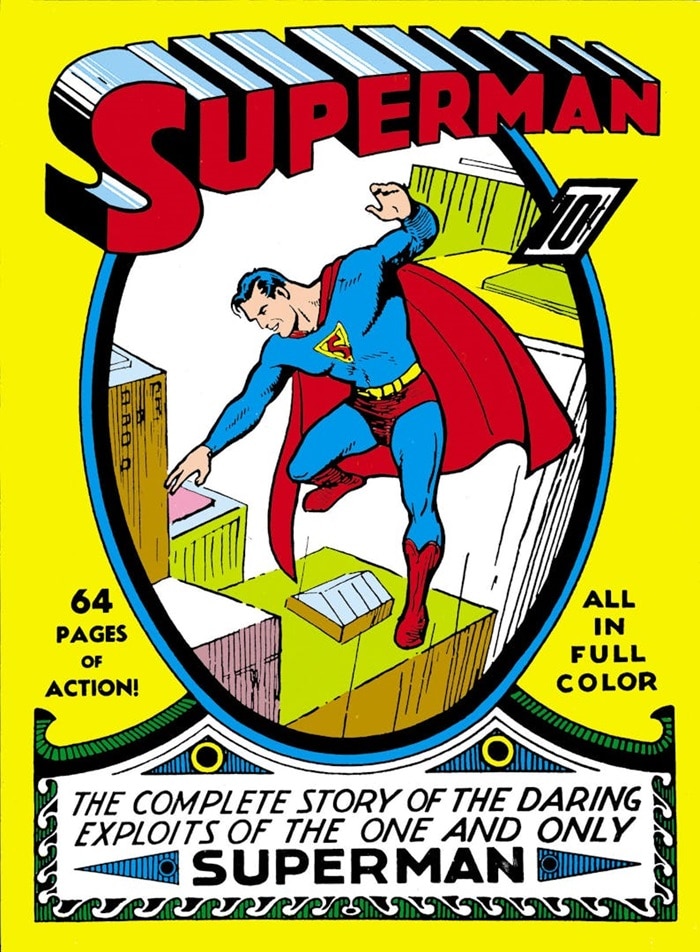
I want to read Superman’s comics from the beginning. Where should I start?
If you’re looking to get into Superman, don’t worry about reading all his comics from the beginning. Comic book storytelling is different than television or movies. If you wanted to get into a show like Breaking Bad or Lost, you would need to start with the first episode of season one in order to fully understand the later seasons. Comic books don’t work the same way. Nobody expects you to catch up on eight decades of comics to understand Superman’s modern adventures.
There is some serialization, but not to the same level that you’ll find on TV or within a film franchise. Since new readers come in all the time, the editors, writers and artists try to produce each comic so that it’s new reader friendly. For example, if an issue of Superman has Lex Luthor reference his history with the villain Brainiac, it will be written in a way where you’ll understand their history even if you haven’t read the books they’re referring to.
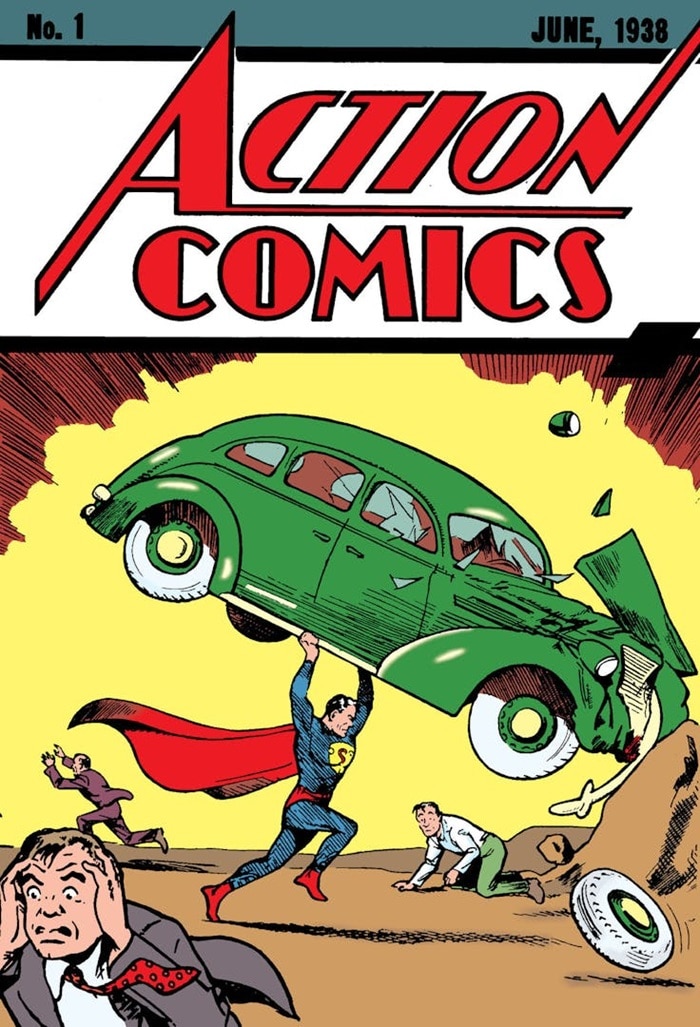
What’s the very first Superman comic? Should I start reading from there?
The first Superman comic is Action Comics #1, which was published in 1938. You can go back and begin reading from there, but if you’re new to comics I’d recommend starting with something more recent. Still, if you do want to check out these early adventures, you should realize that most of the comics from the Man of Steel’s first several years were standalone stories that could be read in any order.
While these old Superman comics are historically important and laid the foundation for the character, they can be difficult to read in large chunks if you aren’t used to the storytelling sensibilities. Old comics were meant to be disposable entertainment and the 1940s writers never thought people would be reading hundreds of pages in one sitting. Also, keep in mind that if you wanted to read every Superman comic from 1938 to today, it would take you years to do it. An Indiana math teacher has been doing it since 2009, and he still hasn’t caught up.
If you’re looking to get into Superman’s more modern adventures, the best thing to do is pick another starting point (which we’ll get into in the next section), while also reading random back issues that interest you.
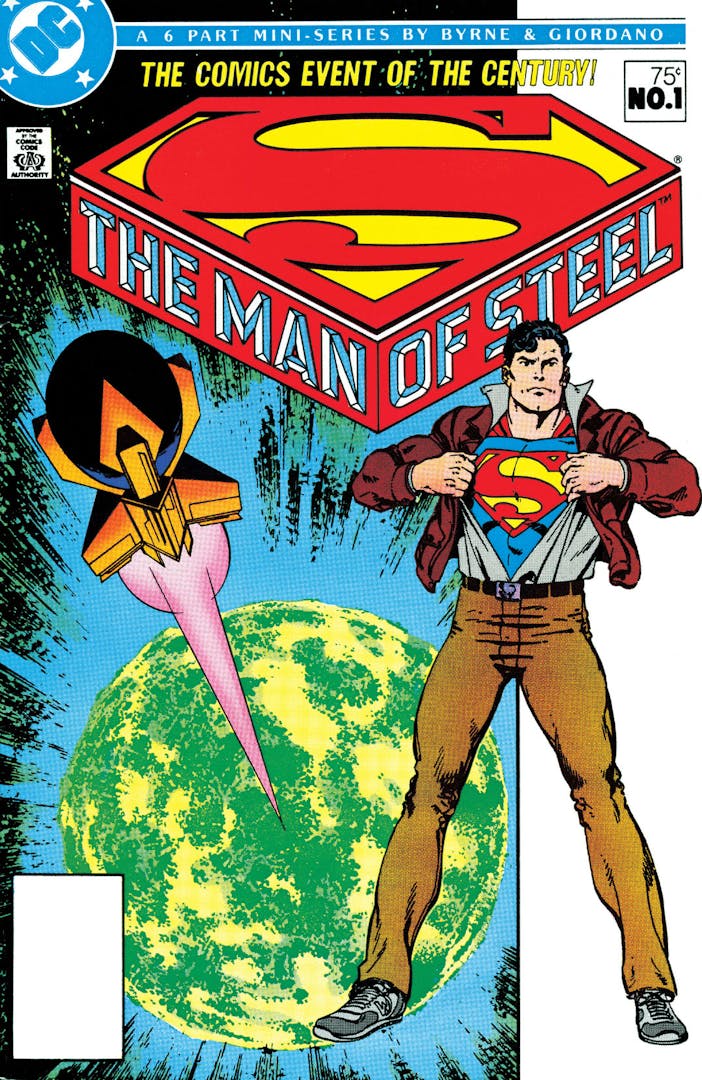
If I’m not starting from 1938, then where should I start?
The great thing about Superman is that he has multiple beginnings. Don’t worry, there is a section later in this article that explains why.
In 1986, DC rebooted Superman with a miniseries called The Man of Steel. Over six issues, the comic told you everything you needed to know about Superman, his friends, his enemies and the world of Metropolis. This was the beginning of a new comic book continuity that set the stage for decades of stories.
Most of the concepts and dynamics introduced in The Man of Steel are still being used to this day. This is also when Superman comics began to get more serialized, with running plot threads and character development. If Superman had a “season one,” it would be John Byrne’s The Man of Steel. If you’re not opposed to reading a comic that’s nearly four decades old, it’s a great story to start off with.
If you enjoy The Man of Steel and want to continue reading from there, DC has published a series of trade paperbacks which collect the next phase of Superman comics. Just look for Superman: The Man of Steel Vols. 1-9.
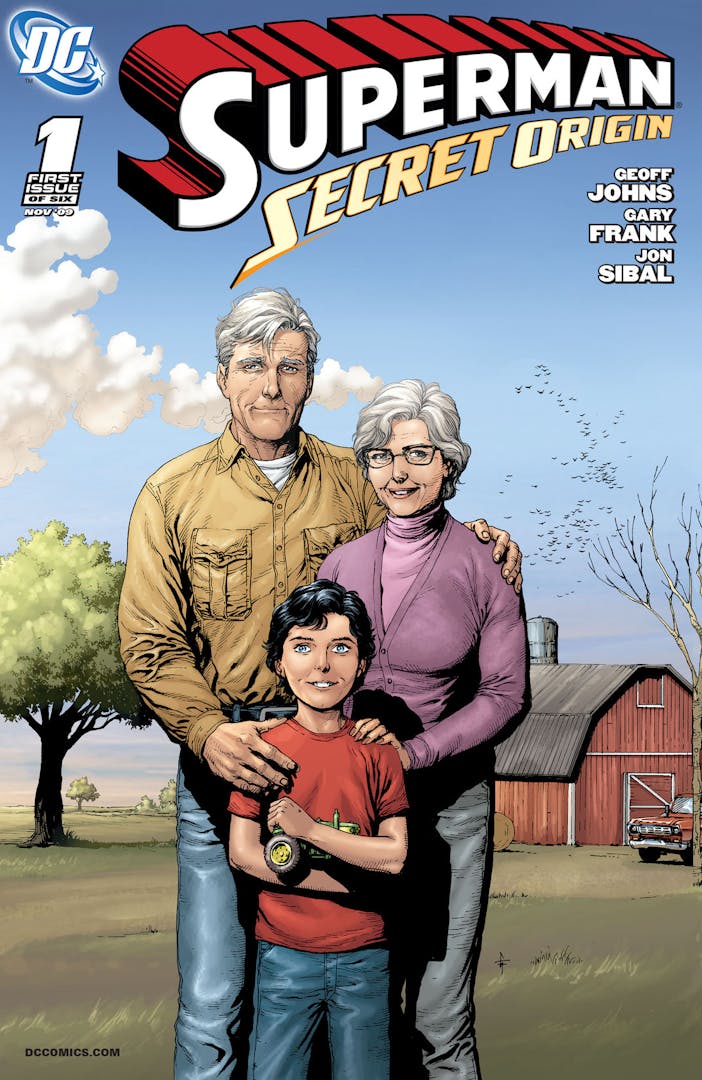
If you want something more modern, Superman: Secret Origin is another retelling of Superman’s which was published in 2009. Alternatively, you can begin your Superman reading journey by starting with whatever the newest volume or newest creative run is. I know that can seem jarring if you’re used to watching long-running television shows from the beginning, but comic book storytelling is a different animal. New runs and relaunches are meant to be jumping on points and are new reader friendly.
For example, the current Superman run by Joshua Williamson began in 2023 with Superman #1. It’s a great place to start, and Williamson does a phenomenal job writing an addictive storyline that brings new readers up to speed, even if they’ve never opened a comic book before. After you’ve read a few stories featuring the Man of Steel in action, you can branch out and try other titles and classic storylines like The Death of Superman. We know you’re curious about that one. We just wouldn’t recommend it as your very first Superman comic unless you already have a pretty good understanding of the DC Universe.
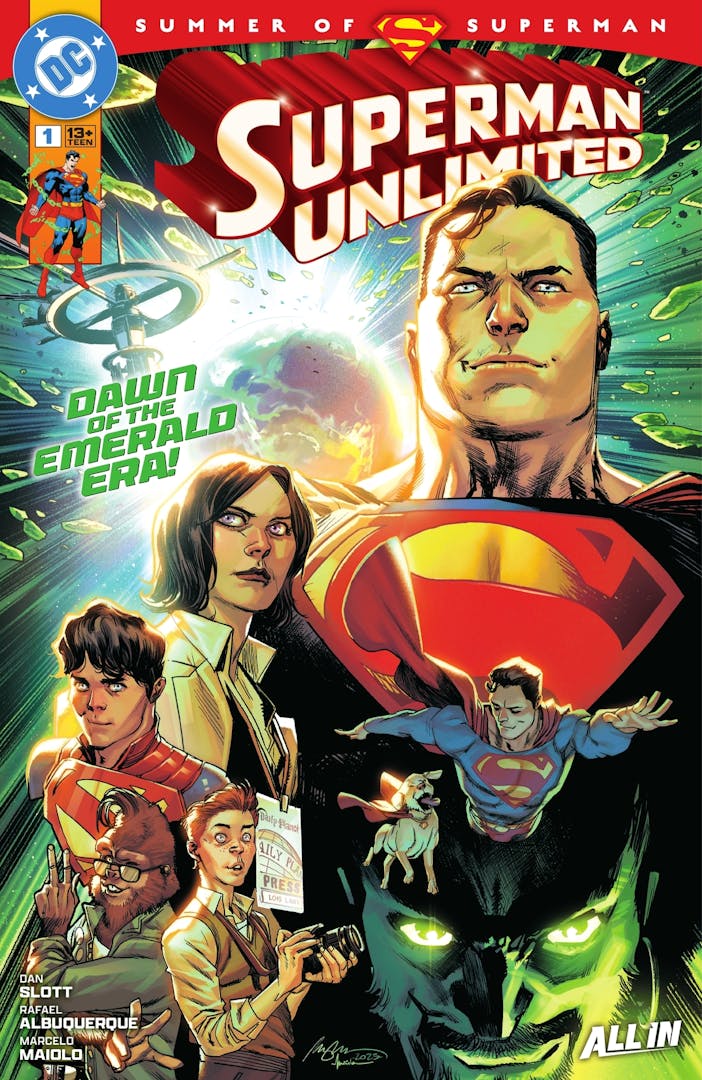
What’s with all the different Superman comic titles? Is there a difference between Superman and Action Comics?
Superman has two main ongoing titles, Action Comics and Superman. Both comics feature the same version of the character, telling parallel stories about his life. There are times when the titles will crossover, but for the most part you can read Action Comics without needing to know what’s happening in Superman and visa versa. If you choose to read both, you’ll have more context for what’s going on in Superman’s world.
There have also been other spinoff titles. As I write this, Superman is also appearing monthly in Superman Unlimited, Absolute Superman and Batman/Superman: World’s Finest. This is in addition to his guest roles in other comics and team books like Justice League Unlimited. However, if you’re reading this several years from now, this all may have changed.
But Superman and Action Comics? Those two titles have continued in one form or another for decades. While we can’t predict the future, we feel pretty safe in saying that if you walk into a comic shop and ask for the latest issue of Superman or Action Comics, they’ll have it on their shelves whether you do this tomorrow or ten years from now.
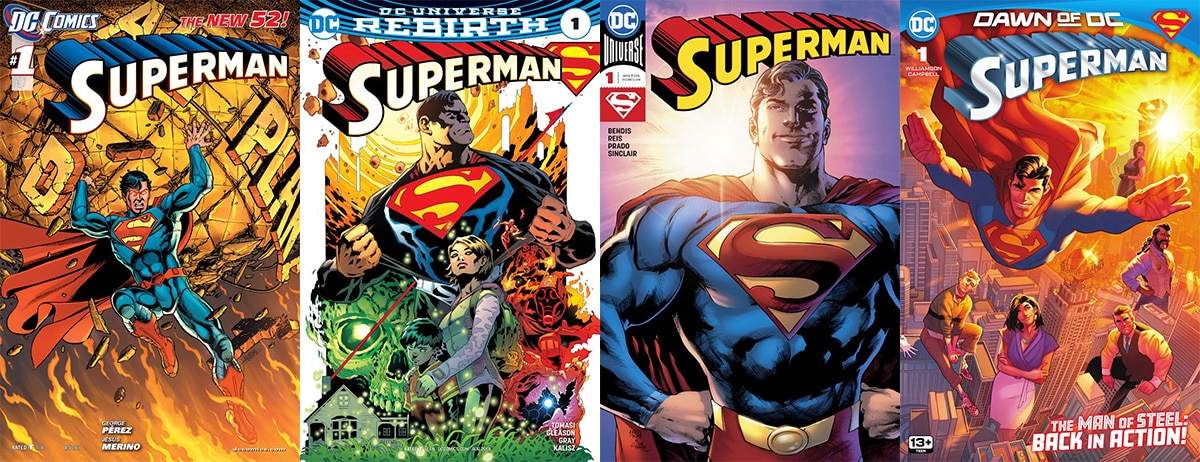
How do the issue numbers work for Superman comics? Why are there multiple versions of Superman #1?
As you look through back issues, you might notice that DC published Superman #43 in 2018 and Superman #24 in 2025. That’s because Superman and some of DC’s other titles occasionally relaunch with a new volume. This might be to showcase a new creative team, or to mark a new direction in Superman’s life. If you’re ever looking for a certain issue, like 2023’s Superman #2, check the publishing year to make sure you have the correct volume. To make things easier for new readers, guides and articles published on DC.com will usually list the year a comic was published if there are multiple volumes.
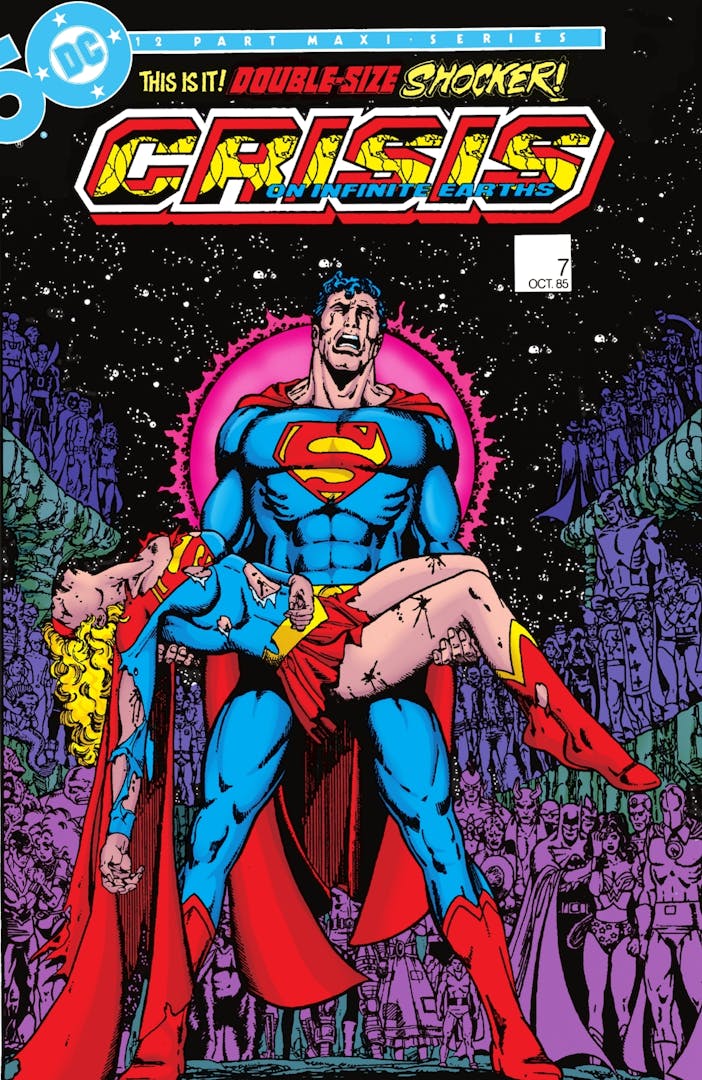
What’s the deal with Superman’s continuity? I see people saying things like “Pre-Crisis” and “Post-Crisis.” Has Superman had the same ongoing story since 1938?
To understand Superman continuity, you need to understand the concept of a multiverse. If you can grasp the idea that there may be different Earths out there, each with their own unique history and development, then the rest should be easy.
In 1985-1986, DC Comics published an event called Crisis on Infinite Earths. The storyline featured the DC heroes facing a huge threat known as the Anti-Monitor. There was some time travel and reality manipulation during the storyline, and when the dust settled, the DC Universe had a new history.
Superman remained the same character, but the time traveling events of Crisis altered his history. Some of these changes were small, like the type of rocket baby Kal-El came to Earth in. Other changes were bigger, such as Krypton having a completely different culture and Clark’s Earthbound parents living to see him reach adulthood and become Superman.
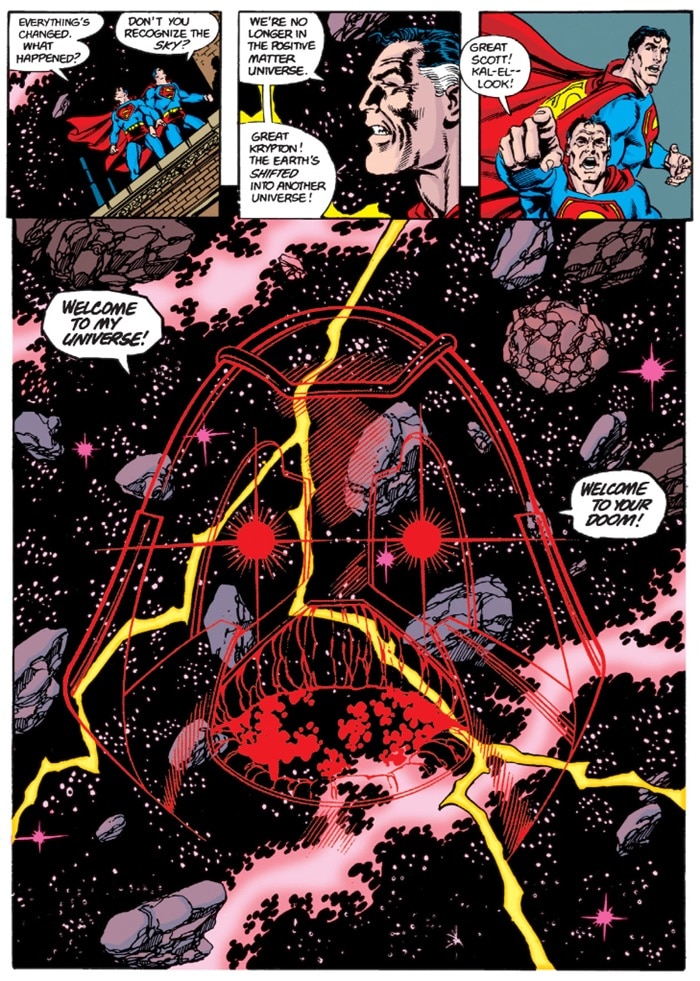
When people say Pre-Crisis or Post-Crisis, they’re referring to the different versions of the character and history which existed before and after the Crisis storyline. There have been other reality altering events, such as Flashpoint and Infinite Crisis. All these storylines have tweaked Superman’s history Marty McFly-style, and you might see people refer to the Pre-Flashpoint or Post-Infinite Crisis version of the character.
While Superman has had a few reality changes over the years, the ongoing storyline hasn’t strayed too far from the new history which began after Crisis in 1986. For example, Superman’s past was altered again in 2006 after Infinite Crisis, but the changes were small and his ongoing titles continued with the Pre-Infinite Crisis subplots.
To sum it up, it’s been the same Superman this whole time, he’s just had some of his history altered due to time travel.
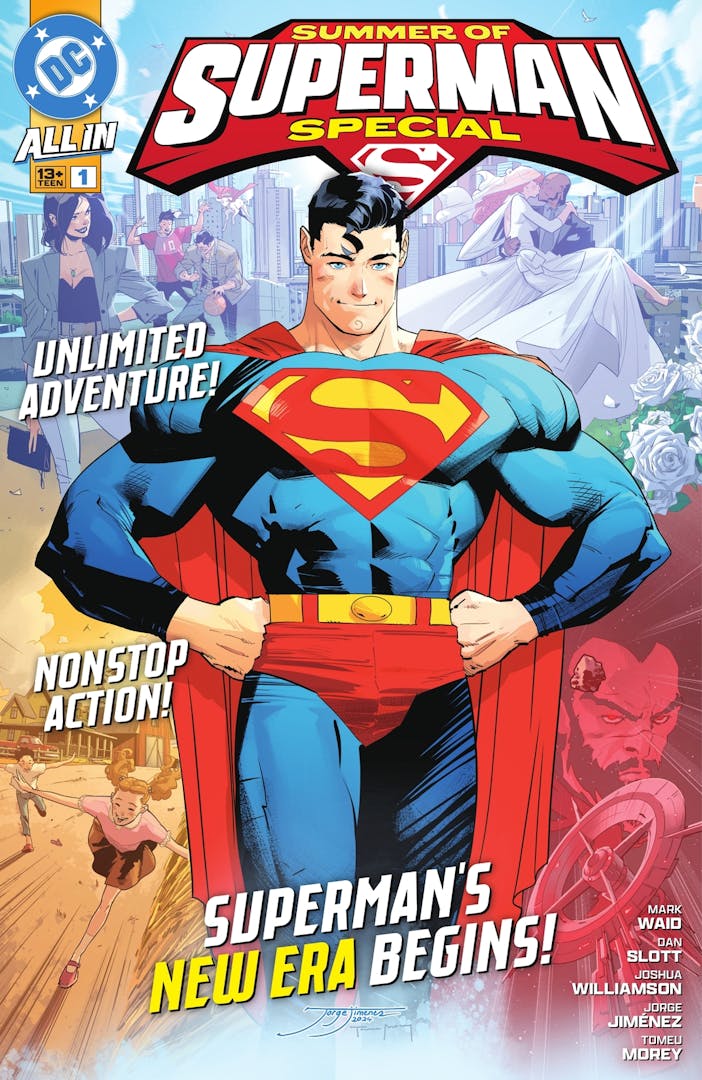
Where can I find Superman comics?
Superman’s monthly comics can be purchased at your local comic shop. If you want to catch up by reading the trade paperback collections, many bookstores have a dedicated graphic novel section where you can buy selected Superman collections. All of the recommended books listed in this article are also available from online retailers like Amazon.
If you want to read your comics digitally, then DC UNIVERSE INFINITE is the way to go. It’s like a streaming service for digital comics. You can read decades of Superman back issues for one monthly price. If you upgrade to the Ultra tier, you can read Superman’s monthly comics thirty days after print release. If you’re looking to read a lot of Superman comics in one sitting, this is the best and most convenient way to do it!
This should get you started on your Superman reading journey! If you still have questions, feel free to join the DC Official Discord server where you can chat with other fans for answers and recommendations.
Joshua Lapin-Bertone writes about TV, movies and comics for DC.com, is a regular contributor to the Couch Club and writes our monthly Batman column, "Gotham Gazette." Follow him on Bluesky at @joshualapinbertone and on X at @TBUJosh.
NOTE: The views and opinions expressed in this feature are solely those of Joshua Lapin-Bertone and do not necessarily reflect those of DC or Warner Bros. Discovery, nor should they be read as confirmation or denial of future DC plans.
